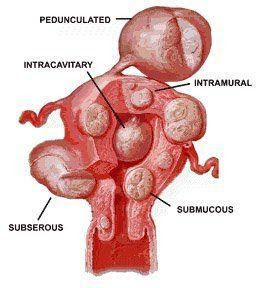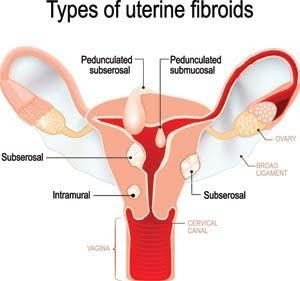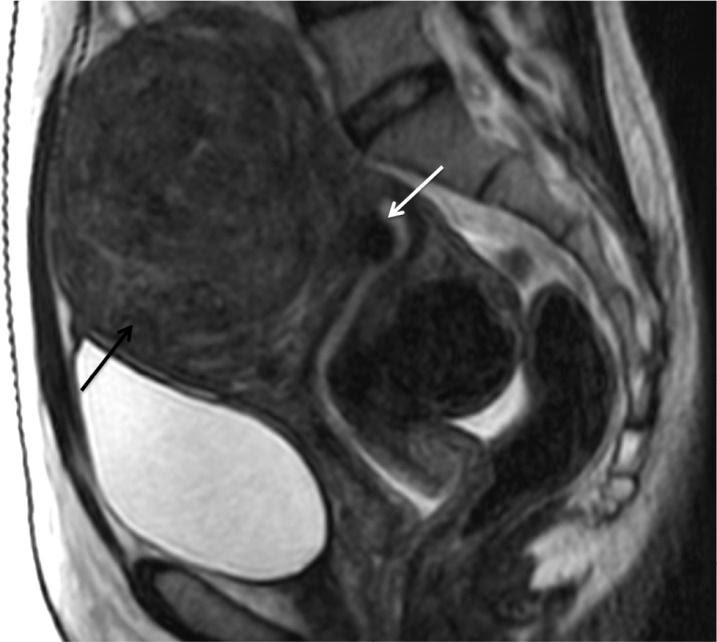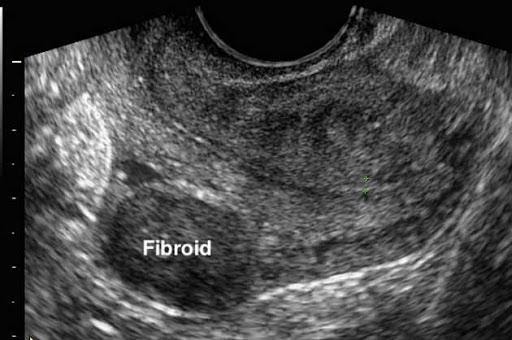BEST DOCTOR FOR FIBROID TREATMENT
WELCOME TO MY GARDEN
Dr GSS Mohapatra CENTRE FOR L.I.F.E
(LAPAROSCOPY, INFERTILITY, FIBROIDS & ENDOMETRIOSIS)
Member of ISGE (International Society for Gynecologic Endoscopy)
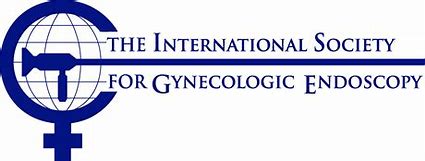
- FIBROID or LEIOMYOMA are noncancerous growths of the uterus that often appear during childbearing years.
They develop from the smooth muscular tissue of the uterus (myometrium).
Fibroids range in size from seedlings, undetectable by the human eye, to bulky masses that can distort and enlarge the uterus.They can range from a few mm to 25cm size.We have removed huge masses covering even the whole of the abdomen.
- Fibroids, particularly when small, may be entirely asymptomatic
- Symptoms depend on the location of the lesion and its size.
- If the fibroid occurs in the layer which is shed during menses ( endometrium) , then it is called a submucous fibroid.These fibroids even when very small ,ranging 1 to 2 cm can cause severe bleeding and intolerable pain abdomen, especially during day 2 and day 3 of menses.
- If the fibroid is in the middle layer of the uterus called myometrium, then it may or may not cause increased bleeding per vagina unless it assumes the size of approx. 4 to 5cm in diameter. It is called an intramural fibroid. It may cause pain abdomen.
- If the fibroid is found in the outer most layer called perimetrium, then it is called a subserous fibroid. It will never cause increased bleeding symptoms, but it most commonly causes pain, a sense of heaviness in the abdomen,and also cause pressure symptoms by pressing on the urinary bladder which is anterior to the uterus or posteriorly on the bowel causing a sense of incomplete evacuation during the act of urination and defeacation respectively.it may reach the size of up to 25 to 30cm.
Types Based on Location
- submucous ( in the endometrium): most inner layer
- intramural ( in the myometrium): middle layer
- subserous( in the perimetrium): outer layer.They can also grow out in a papillary manner to become pedunculated fibroids. These pedunculated growths can actually detach from the uterus to become a parasitic leiomyoma
- Watchful waiting for minimal fibroid symptoms or when nearing menopause
- If you have uterine fibroids but you have few or no symptoms, you may not treatment. Instead, the doctor will recommend
- LIFESTYLE MODIFICATION
- WEIGHT REDUCTION OF ATLEAST 15 PERCENT
- AVOID CARBOHYDRATES AND FATTY FOOD
- FOR A SPECIALISED INDIVIDUALISED TREATMENT FOR PCOS CUSTOMISED EXCLISIVELY FOR YOU, KINDLY CONSULT IN OPD
- First and foremost is WEIGHT REDUCTION


WHAT ARE THE MEDICATION FOR FIBROIDS WITH PAIN AND BLEEDING PER VAGINA ?
- Watchful waiting for minimal fibroid symptoms or when nearing menopause
- If you have uterine fibroids but you have few or no symptoms, you may not treatment. Instead, the doctor will recommend regular follow up. This means that you will have regular pelvic exams and ultrasound to check the fibroid growth and symptoms.
WHAT ARE THE MEDICATION FOR FIBROIDS ?
- Medication can be used alone or in combination for symptomatic treatment like excessive bleeding per vagina and pain abdomen. We have very rarely seen any significant reduction in the size of fibroids with these medication though.
Surgical treatment options include:
- Heavy uterine bleeding and/or anemia has continued after several months of therapy with medication.
- If the Fibroid grows during or after menopause.
- History of repeated miscarriages or causing infertility.
- Pain or pressure due to fibroid affecting the quality of life of the patient.
- Presence of urinary or bowel problems
- If there is suspicion that the fibroid is malignant.
Surgical treatment options include:
- MYOMECTOMY (only removal of the fibroid and preserving the uterus). It is done when the uterus is being preserved for eg., the patient has not completed her family, and is desirous of getting pregnant. It can be done laparoscopically / hysteroscopically or by the open method. It is usually decided by the Surgeon based on the location, size of the fibroids and the competence of the surgeon as to whether he is skilled enough to do it laparoscopically.
- HYSTERECTOMY?(REMOVAL OF UTERUS) .It is usually done in females of over 40 , who have completed their family. Hysterectomy is the only fibroid treatment that prevents regrowth of fibroids. It improves the quality of life for many women.
During this procedure a laparoscope (a thin fiber-optic device that transmits light and a video image) is inserted through a small incision, usually in the navel, to view the uterus. Two or three small (half-inch) incisions are made below the public hairline and 5mm instruments are inserted through these incisions to perform the surgery. The fibroids are detached from the uterus and removed. Following removal of the uterine fibroids, the defect is closed by either vicryl no.1 / barbed sutures. The enucleated fibroid is churned into pieces by a morcellator. Usually the advantages of laparoscopy are quiker recovery, lesser pain, early ambulation and early return to work/ duty. Usually the patient is fit to be discharged in 1-2 days. The interesting thing is that not all surgeons are trained in laparoscopic surgery; because of the small size of the incisions, removing uterine fibroids with laparoscopic myomectomy requires special training.
few links for laparoscopic myomectomy by DR G S S MOHAPATRA is given below:
- https://www.youtube.com/watch?v=MVOw_SoHcUc
- https://www.youtube.com/watch?v=XOqHaT3cxlY : Very large and difficult fibroid removal laparoscopically
- https://www.youtube.com/watch?v=NOdJPZU50YY : Very large fibroid removal
Hysteroscopic myomectomy involves inserting a hysteroscope through the vagina and the cervix into the uterus. Hysteroscopes are so thin that they can fit through the cervix with minimal or no dilation. Because the instruments are inserted through the cervix no abdominal incisions are needed. The hysteroscope is a thin, telescope-like instrument that allows the doctor to view the fibroids. A resectoscope, which is a hysteroscope fitted with a wire loop that uses high-frequency electrical current to cut or coagulate tissue, is then inserted to remove the fibroids. The loop is placed around the fibroid, electrical energy passes through the loop, and the fibroid is cut loose. The fibroid can then be removed through the vagina.
- A link to hysteroscopic myomectomy done by DR G S S MOHAPATRA: https://www.youtube.com/watch?v=vJPstgKqPq4
- TOTAL LAPAROSCOPIC HYSTERECTOMY :laparoscopic removal of uterus. Unedited fastest uterus removal laparoscopically by DR G S S MOHAPATRA: https://www.youtube.com/watch?v=ZpIKmNFQufk
- LAPAROSCOPIC UTERUS REMOVAL WITH MULTIPLE FIBROIDS: https://www.youtube.com/watch?v=illX3SN7rsQ
There are many other such surgeries available on YouTube , done by DR G S S MOHAPATRA.
ALL FIBROIDS DO NOT NEED TREATMENT IN THE FORM OF MEDICATION AND SURGERY.
- DON’T PANIC WHEN YOU ARE INCIDENTALLY DIAGNOSED WITH A FIBROID ON A ROUTINE ULTRASOUND.CONSULT A SPECIALIST AND TAKE AN EXPERT OPINION.
- WHENEVER POSSIBLE, A LAPAROSCOPIC SURGERY IS MUCH MUCH BETTER THAN AN OPEN SURGERY FOR ANY SIZE OF FIBROIDS AND LOCATION. THERE IS FASTER RECOVERY, LESS PAIN, LESS BLOOD LOSS, FASTER AMBULATION AND LESS HOSPITAL STAY.
